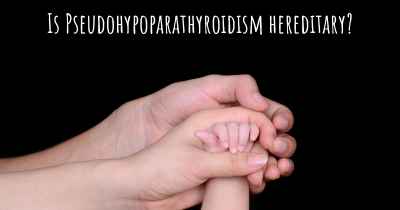Is it advisable to do exercise when affected by Pseudohypoparathyroidism? Which activities would you suggest and how intense should they be?
See if it is advisable for people with Pseudohypoparathyroidism to practice sports and which ones are the most recommended if you have Pseudohypoparathyroidism

Pseudohypoparathyroidism (PHP) is a rare genetic disorder that affects the body's ability to respond to parathyroid hormone (PTH). This hormone is responsible for regulating calcium and phosphorus levels in the body. As a result, individuals with PHP may experience low levels of calcium and high levels of phosphorus in their blood.
When it comes to exercise and physical activity for individuals with PHP, it is important to approach it with caution and consult with a healthcare professional. While exercise can have numerous benefits for overall health and well-being, it is crucial to consider the specific needs and limitations of someone with PHP.
Benefits of Exercise for Individuals with Pseudohypoparathyroidism:
Regular exercise can provide several benefits for individuals with PHP, including:
- Improved bone health: Weight-bearing exercises, such as walking or strength training, can help promote bone density and reduce the risk of osteoporosis, which may be a concern for individuals with PHP.
- Enhanced muscle strength: Strengthening exercises can help improve muscle tone and strength, which can be beneficial for overall mobility and daily activities.
- Cardiovascular health: Engaging in aerobic activities, such as swimming or cycling, can help improve cardiovascular fitness and reduce the risk of heart disease.
- Mood and mental well-being: Exercise has been shown to release endorphins, which can improve mood and reduce symptoms of anxiety and depression.
Recommended Exercises for Individuals with Pseudohypoparathyroidism:
When selecting exercises for individuals with PHP, it is important to focus on activities that are low-impact and minimize the risk of injury. Here are some recommended exercises:
- Walking: Walking is a low-impact exercise that can be easily incorporated into daily routines. It helps improve cardiovascular fitness and strengthens leg muscles.
- Swimming: Swimming is a great option as it is gentle on the joints and provides a full-body workout. It improves cardiovascular fitness, muscle strength, and flexibility.
- Cycling: Cycling, whether outdoors or on a stationary bike, is a low-impact exercise that helps improve cardiovascular health and leg strength.
- Yoga: Yoga focuses on gentle stretching, balance, and relaxation. It can help improve flexibility, core strength, and overall well-being.
- Strength training: Light to moderate strength training using resistance bands or light weights can help improve muscle tone and strength. It is important to start with low weights and gradually increase as tolerated.
Exercise Intensity and Safety Precautions:
The intensity of exercise for individuals with PHP should be tailored to their individual capabilities and limitations. It is important to start slowly and gradually increase the duration and intensity of exercise over time. Here are some additional safety precautions to consider:
- Consult with a healthcare professional: Before starting any exercise program, it is essential to consult with a healthcare professional who is familiar with PHP and can provide personalized recommendations.
- Listen to your body: Pay attention to how your body feels during and after exercise. If you experience pain, dizziness, or any unusual symptoms, it is important to stop and seek medical advice.
- Stay hydrated: Proper hydration is crucial, especially when engaging in physical activity. Drink plenty of water before, during, and after exercise.
- Warm-up and cool-down: Prior to exercise, perform a gentle warm-up to prepare your muscles and joints. Afterward, cool down with stretches to promote flexibility and prevent muscle soreness.
- Use proper equipment: When engaging in activities such as cycling or strength training, ensure you have appropriate equipment and use proper form to minimize the risk of injury.
Conclusion:
While exercise can be beneficial for individuals with Pseudohypoparathyroidism, it is crucial to approach it with caution and seek guidance from a healthcare professional. Walking, swimming, cycling, yoga, and light strength training are generally recommended exercises. The intensity should be gradually increased, and safety precautions should be followed to ensure a safe and effective exercise routine. Remember to listen to your body and consult with a healthcare professional for personalized advice.








